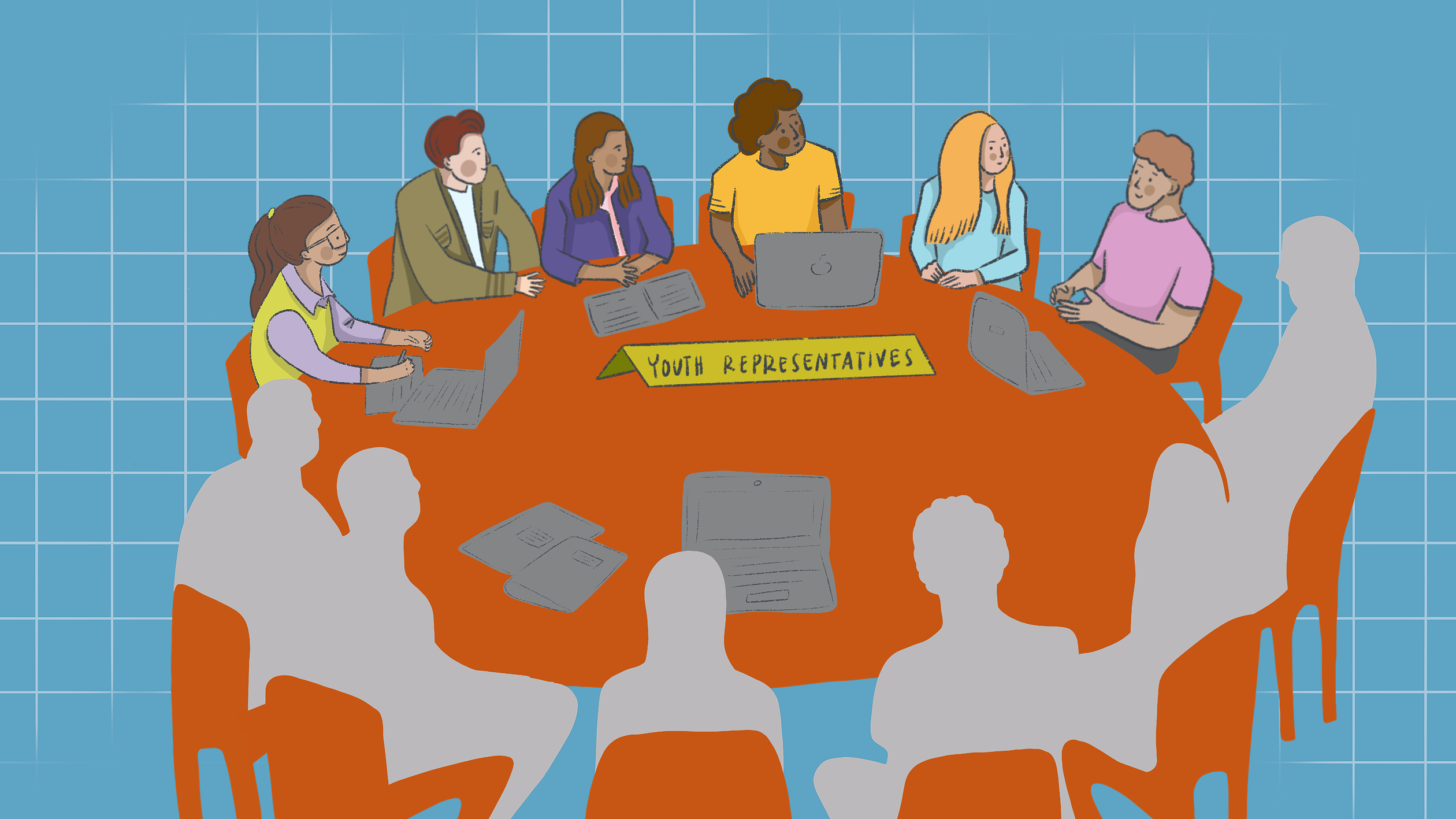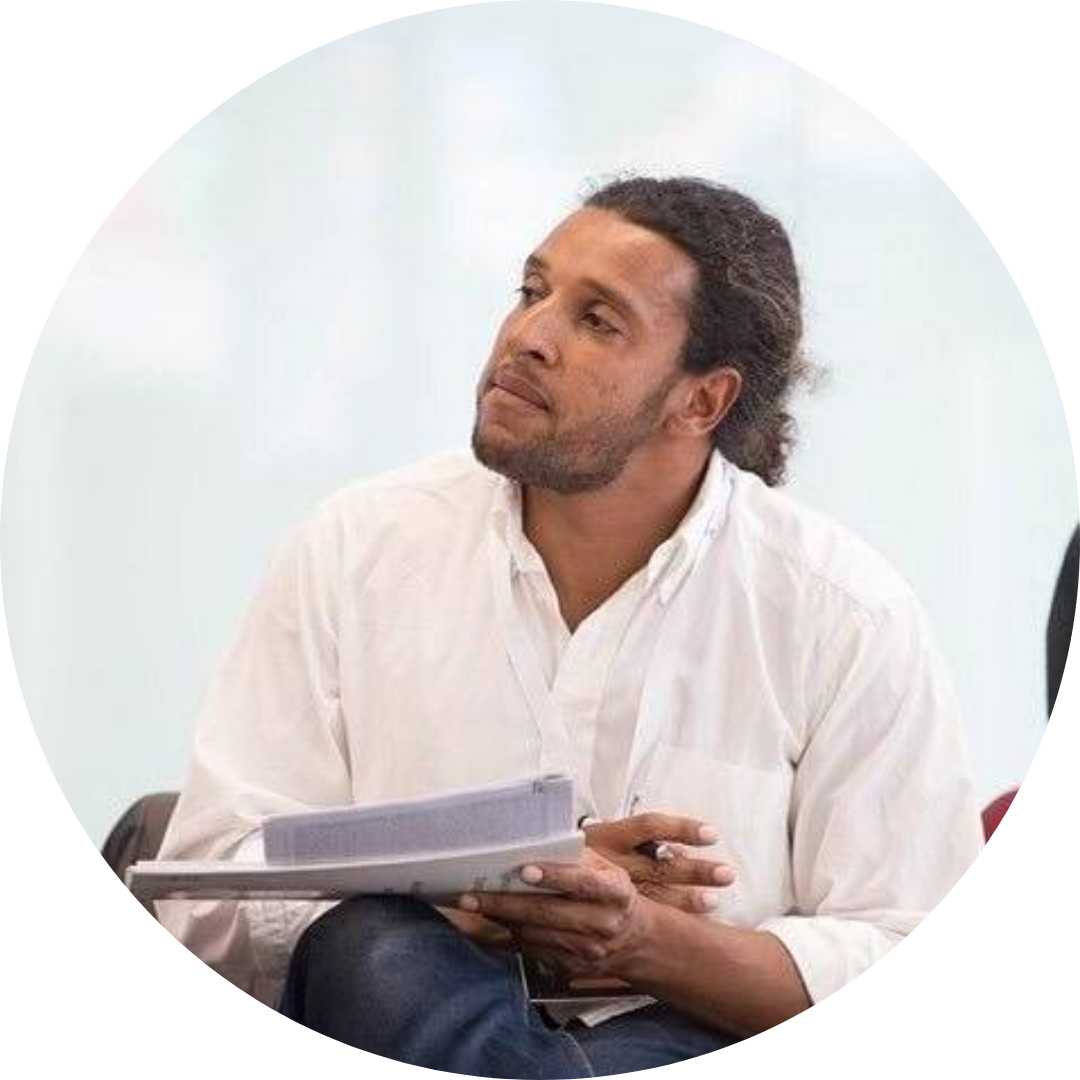
Illustration by Daniela Nunes
A call for systemic change: increasing the quality of democracies through youth participation
by Bruno António and Carolina Loureiro
At DYPALL Network, youth participation has a very specific meaning. More than the broader concept of youth engagement (where almost everything fits), we’re focused on how young people can meaningfully shape and influence decision-making processes that directly impact local public policies. Our core interest lies in whether local and regional government bodies are genuinely opening up space for youth perspectives to be included in these processes.
Let’s put aside the jargon such as “Young people are the future” or the present. Young people are citizens, and they should have the opportunity to have a say on the topics that are of concern to their lives. Participating goes beyond being consulted. Having a voice means taking a seat in the decision-making mechanisms; it means to have power; it means to be seen and be considered as an added value to the policy-making processes. We live in a period where transformation is happening every day, hour and minute and who better to keep up all these changes if not young people? Obviously, this isn’t the only perspective that matters, but it’s one that deserves to stand alongside the wisdom and experience of other generations.
Making this disclosure doesn’t take the credit or ignore the importance of many other forms of youth participation that are highly relevant and important. But in our work, we decided to focus on this particular form – young people influencing and being part of the policy-making processes in local governance. Why? Because when we examine local-level elected bodies, the presence of young people is noticeably small, often falling short of representing the actual youth population in these communities.
We should ask ourselves: Why don’t we have more young people in decision-making roles?
Let’s do some maths! In 2021, across the EU, one in six people was aged between 15 and 29 years old. This represents around 73 million people of the total EU population (around 449 million) or 16.3%. According to the European Youth Forum article “European Elections 2024: Young people never had a chance”, the percentage of young people under 35 years old in the European Parliament is only 10%. In simple words, and even enlarging the age range to 35 years old, that represents 25% of the European population. Young people are far from being represented in institutions, therefore not allowing them to share power and decision making.
After reading this article we challenge you to do the same analyses in your municipality. Go and look at how many young people are living in your locality and how many have an elected position or have a decision-making role. Many factors can lead to this situation, from distrusting the democratic institutions and their representatives, to finding other forms of being actively involved or simply lacking political awareness. We can’t go through all of them, but all in all, we should analyse the culture of participation that we are/want to build in our societies, how being politically involved is perceived and what means are available to make it happen.
At DYPALL Network, we believe that increasing youth participation leads to better decisions – not only for young people but for the community as a whole. That’s a message we put a lot of effort into spreading across our network, including local youth NGOs and public authorities. Structures like Local Youth Councils can enhance the engagement of young people in political and democratic life. In recent years, we have been exploring and analysing different practices and models around Europe and developing several resources to support the implementation and management of these spaces, understanding its significant potential to empower, educate and involve youth in local governance. The Quality Charter on participatory and inclusive Local Youth Councils is a great example of an assessment tool that provides a set of criteria to promote fair youth participation, the monitoring and evaluation of youth policies as well as its sustainability. Besides the political aspect – very relevant in itself – there is still a strong need to adopt at the local and national level clear and measurable strategies, effective measures and relevant quality frameworks to ensure the actual development and maintenance of safe and rich ecosystems of youth participation. That is why we strongly believe that municipalities should focus not only on participatory processes and projects but also on creating a vision and an environment that promotes and includes youth perspectives, as highlighted by the Reykjavík Declaration. Local Youth Strategies are a concrete outcome and guiding document that allows us to understand the context, using an evidence-based approach, and involving young people as well as relevant stakeholders that have responsibility in these matters. We know from experience that the development of this process reflects a clear willingness of decision makers and ignites the participants, building reflections, motivation, and awareness of specific measures to increase the quality of life of young people by involving them.
Neither of us are considered young people anymore. Carolina might still qualify as a young farmer in some countries, and Bruno could eventually even pass as a young fisherman if such a category existed for people of his age. But we often say we approach this work from a personal, and even selfish perspective. We’re not aiming to improve society just for young people; we believe we’re working towards a better society for everyone, including our own “not-so-young” generation!
Our aim is to contribute to having more engaged and active citizens, regardless of their age, by developing communities that consider different backgrounds, knowledge, and experiences as an added value. This is a very fertile field that is not being properly used and cultivated by many stakeholders responsible for it in a strategic and long-term approach. Such a culture requires time, resources, energy – and yes, a good dose of passion and the courage to try, fail, and try again.
Would it be so hard to create a society where citizens are engaged and motivated to participate in the decisions that affect their lives? How often do we ask ourselves this question? We believe it’s not that difficult. It comes down to prioritising it politically, dedicating resources to training, experimenting, replicating successful models – and starting from an early age!
Innovation in terms of new ways to engage citizens in public decisions and policy development is not something that will take place; it is already happening. How are we getting ready for this? Well, that is a great question, but it is important to build solid foundations. Let’s invest in young people, youth workers, municipal officers, and decision makers to make youth a priority that cuts across all areas of policy making. This requires a systemic approach from local and regional authorities, alongside all the professionals with responsibility in this area.
Working at the local level allows us to observe many different formats and experiments in youth participation. Even though it’s not as widespread as it should be, in our opinion, there are a growing number of interesting experiences, mechanisms and structures being tried. These range from the more traditional formats such as youth councils or other advisory structures, participatory budgeting, the support of youth-led initiatives or more digital-based models of youth engagement using AI, among others.
But what are young people saying today about their formats of participation and engagement?
While youth councils, participatory budgeting and advisory structures sound promising on paper, young people’s opinions on these formats reveal a deeper narrative. Many values these platforms for the access they provide, but they also feel that traditional formats can be limiting or, at times, tokenistic. Young people want authentic spaces where their input really matters, not just for showing off or consultation. They’re calling for more responsive, agile, and impactful formats that go beyond symbolic participation and allow them to make real contributions. Their feedback challenges us to create structures that evolve with their needs and bring tangible outcomes for their communities.
Is “youth participation” an idea that will eventually fade, and move out of the political priorities? Or could it be the foundation for rethinking how we structure our democracies? What if youth engagement isn’t just an “add-on” to public policy decision making, but a transformative approach to involving all citizens more fully?
As society faces complex challenges, young people’s voices aren’t simple or symbolic contributions – they’re vital. So perhaps the question isn’t about inviting young people into existing systems, but about rebuilding systems with young people at the core. Could it be time to reimagine what democracy itself could look like? Who can do this better than young people?
In a world where rapid change and uncertainty are the only constants, engaging young people in governance is no longer a luxury – it’s a necessity. The future of our societies depends on inclusive, diverse, and flexible decision-making structures that can adapt to new realities.

Bruno António is the Coordinator of DYPALL Network, with over 19 years of experience in youth policy and international youth work.

Carolina believes youth participation can improve our democracies, and you? Let's start from our territories.


